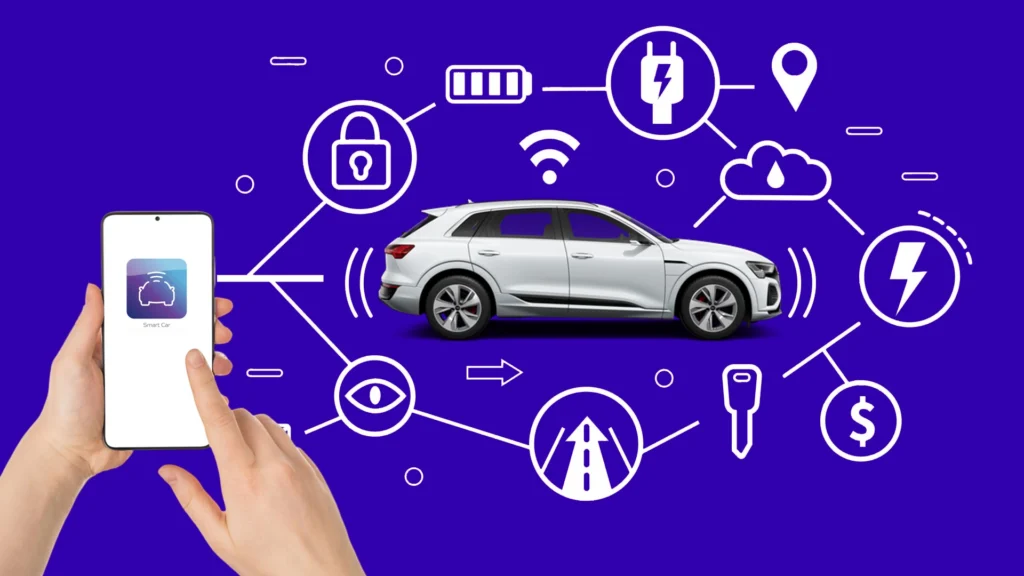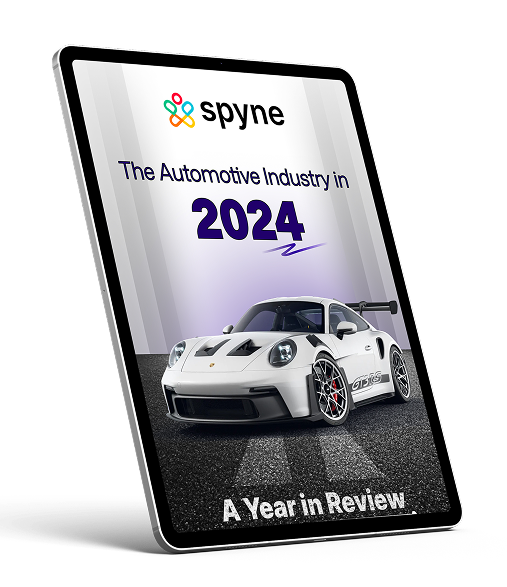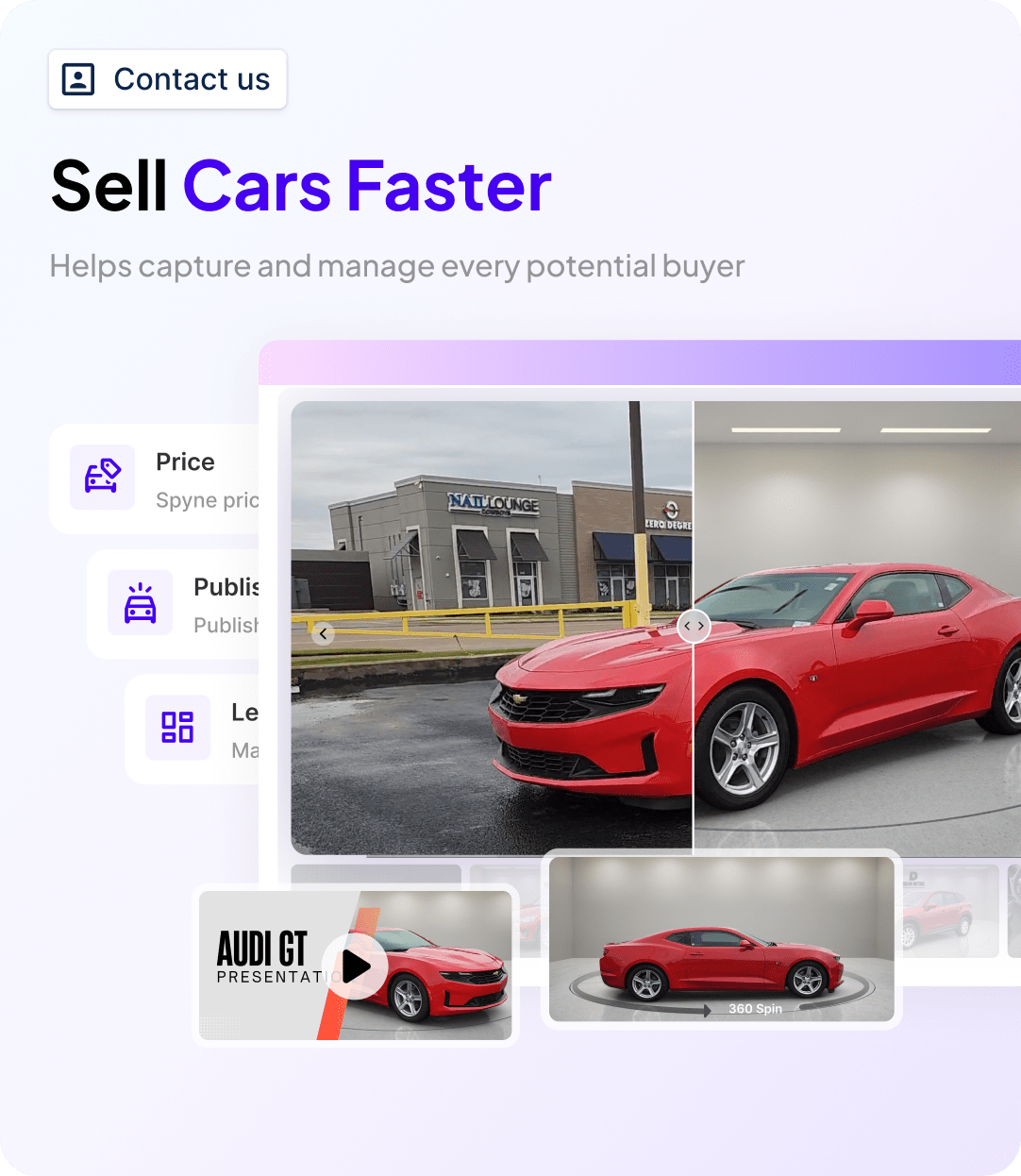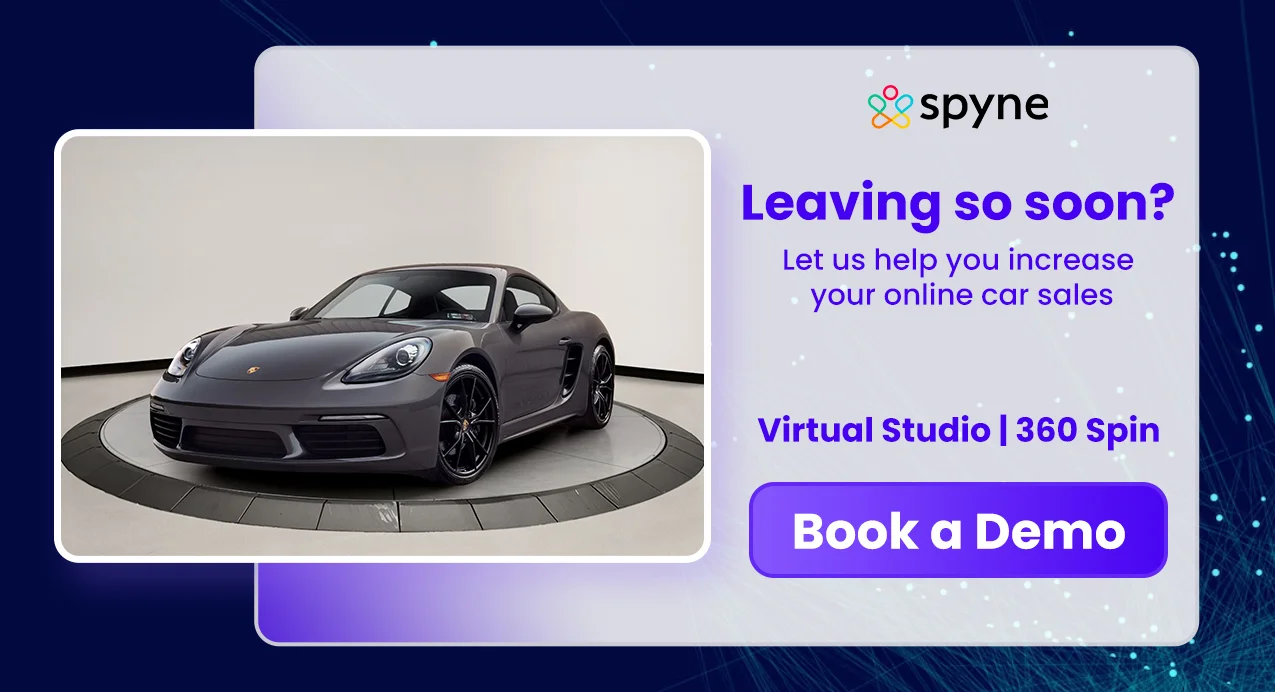Ever wonder what it is about some automotive brands that makes them special? Experience is the answer! For them it isn’t just about selling cars, it’s the journey they offer to their customers, from researching cars online all the way to their first drive, they offer an experience that is seamless, transparent and uninterrupted.
A recent study by McKinsey revealed that nearly 70% of car buyers value the quality of their customer experience as much as the product itself. That is why a seamless, personalized experience is so critical in the highly competitive market of automobiles, creating customer loyalty and driving brand advocacy.
In today’s competitive automotive market, delivering a personalized, seamless experience is no longer an option but a non-negotiable. Whether it is the ease of browsing, the responsiveness of a dealership, or the after-sales support, customer experience plays a crucial role in whether a customer will return or recommend the brand to others.
What is Automotive Customer Experience?
Automotive customer experience is auto companies engaging with their customers from the moment they start looking for a vehicle, throughout the purchase process, and after they’ve driven it off the lot. It’s not just about the vehicle itself but the entire buying journey. This includes easily finding information online, the helpfulness of the sales team, the convenience of the purchase process, and the quality of the after-sales service. Every step shapes the relationship between the customer and the brand.
A positive customer experience tends to leave a long-lasting impression and builds trust in the brand. If an automotive dealership focuses on delivering extraordinary experiences, it can be a key factor for long-term success in the competitive automotive industry.
Importance of Automotive Customer Experience
As per reports, upto 90% of dealers that were surveyed see that customer experience is important for their growth. A successful automotive experience thrives on providing a valuable bond beyond selling the vehicle itself. Brands that prioritize customer needs gain a competitive edge and form stronger bonds with their customers. Here are reasons why automotive customer experience is important:
1) Positive Experiences Lead to Loyalty
When customers have positive experiences from the very first step of inquiry to automotive aftersales support, they are more likely to come back for future purchases and services. Loyal customers recommend the dealership to friends and family.
2) Boosting Brand Reputation
Providing excellent customer service improves the dealership’s reputation, and makes it known for great service and care. A good reputation attracts new customers and builds trust, which is important since word-of-mouth and online reviews can influence buying decisions.
3) Standing Out from the Competition
In a crowded automotive market, top-notch customer experience can set a dealership apart. Dealerships that offer personalized, friendly, and efficient service are more attractive to buyers looking for a hassle-free and enjoyable buying experience.
4) Long-Term Growth and Success
Happy customers are more likely to return for maintenance, repairs, and future purchases, which provides a steady stream of revenue. Focusing on customer experience can lead to higher employee satisfaction, as staff feels proud to work for a company that is known for its excellent service.
Major Challenges and How to Overcome Them
Truth be told, for a long time buying an automobile has never been stress-free. Customers are time and again frustrated by the lengthy, complicated and time-consuming processes. And today, the most successful dealers are those who simplify the process, adopt digital tools and offer a truly personalized experience at every touchpoint. However, achieving this is not short of challenges. With quick thinking dealerships can manage and turn these challenges into opportunities to innovate and get closer to the customers. Unserstand customer lifecycle management for automobile and look at how to leverage these challenges into potent strategies.
1) The Complex Car-Buying Process
It is known that many of the car-buying procedures are scary for consumers mainly because they often involve multiple phases, visits and touchpoints.
Answer: By providing an easy-to-use online platform with features such as model comparisons, clear pricing, and virtual test drives, dealerships can streamline the process. This method accelerates the purchasing process and empowers customers to make informed decisions.
2) Switch to Digital Channels
Adopting digital technology is important but there are many challenges in making these websites safe and easy for people to use.
Answer: Partner with the best in the business of technology in developing robust online systems that can feature virtual car showrooms, live chats, and online configurators; this will help create a customer experience that transforms digital challenges into growth opportunities.
3) Inconsistencies Across Customer Touchpoints
Consumers interact with brands on a number of platforms, including car dealer websites and social media, as well as physical storefronts. There is a scope for confusion and discontent when the messaging or service are inconsistent across different platforms.
Answer: Dealerships can connect all customer interactions across channels by putting in place an integrated CRM system. Customers will feel appreciated and acknowledged wherever they interact with the brand thanks to the consistent experiences this helps to deliver across all platforms.
4) Meeting High Customer Expectations
Today’s customers require fast responses, personalized experiences, and timely service. If this is not achieved, then there will be dissatisfaction and switch dealerships.
Answer: AI chatbots can be used to predict client needs and give prompt responses. Provide customers with personalized recommendations and timely updates to surpass expectations and keep them interested.
The automobile brands can then boost customer satisfaction and achieve long-term loyalty through proactive solutions to these challenges. Remember, each obstacle is an opportunity to innovate and improve the customer experience.
Customer Journey That Defines Customer Experience in the Automotive Industry
Many consumers found the process of purchasing a car to be stressful with common complaints including long paperwork, intricate procedures, and perplexing sales methods. However, dealerships who make the process easier are the ones that stand out. They use modern technologies, offer individualized services, and make sure everything runs well. Despite these difficulties, forward-thinking dealerships can use these challenges as a springboard for innovation and improvement.
Let’s move closer to figuring out how to turn these obstacles into fantastic possibilities and improve automotive customer experience.
Stage 1 – Awareness: The First Spark of Interest
The journey starts even before customers decide they want to buy a car. It begins with awareness, the moment potential buyers first learn about your brand or vehicle. This could happen through an Google ads car dealerships, social media post, or even a tweet from a notable personality.
This stage will aim to meet customers where they are. Whether it’s through an Instagram scroll, watching a TV commercial, or reading reviews. You’ll want to leverage the channels that work best for your audience in raising awareness about your brand.
Stage 2 – Consideration: Getting to Know Your Options
Once they know about your brand, they enter the consideration stage. This is when they begin to compare different car models, read reviews, watch YouTube videos, and ask advice from friends or family.
For instance, if a customer wants an eco-friendly car, then they may compare electric cars like Tesla and other eco-friendly car options. That is the best time to know what your customers want from you. This can be done by doing surveys or receiving feedback through digital means. This will help in knowing what is needed and assist in pushing the customer more down the sales funnel.
Stage 3 – Intent: Actively Looking to Buy
During the intent stage, people who are really interested in buying are present. These can be instances where individuals have scheduled a test drive or visited a dealership and even started configuring a car online. At this stage, the person is indeed serious about buying but waits for incentives or reassurance.
At this stage, it’s all about sustaining the momentum. Make clear, easily accessible options available for test drives or financing. Make sure that the process is not complicated, thus not discouraging the customers from further movement.
Stage 4 – Purchase: The Deal
The most important stage is the purchase stage. Here, customers are ready to make a decision, so the entire process should be smooth, straightforward, and rewarding. While many customers still buy cars at dealerships, an increasing number are purchasing online.
To make the deal more attractive, dealerships can provide promotions, which may include discounts, free services, or accessories. After a deal is made, follow up with customers to find out how they felt about the buying process and solicit feedback.
Stage 5 – Post-Purchase: Keeping the Connection Alive
The journey doesn’t end when the car is driven off the lot. In fact, the post-purchase phase is where a long-term relationship can be maintained. This is when a customer’s loyalty is built.
A simple and effective way is to remind them about maintenance or personalize follow-up actions. This proactive communication reveals to the customers that their experience and the performance of the vehicle matter. Moreover, they will walk out of there with an excellent impression after the problem is addressed rapidly.
Remember to include feedback as well. After a purchase, use tools to gather consumer feedback and surveys. By doing this, you’ll continue to enhance the client experience and keep aware of their wants.
The automotive customer journey is long and full of opportunities to create an exceptional experience. By focusing on each stage, from awareness to post-purchase, you can build strong relationships with your customers and keep them coming back. Embrace digital tools, refine your processes, and stay connected with your customers to drive loyalty and success.
Best Practices to Elevate Automotive Customer Experience
In the automotive industry, following the best automotive customer experience practices can make all the difference. These strategies help boost customer satisfaction, build loyalty, and ensure brand success. Here are 10 best practices for automotive dealerships to create great interactions and lasting connections with your customers:
1) Personalize Every Interaction
Customize your approach for each customer, from marketing to after-sales support. Personalized emails, recommendations, and offers show customers you understand and value them.
2) Be Transparent
Always be clear about pricing, features, and any extra charges. Honesty builds trust and sets the foundation for positive relationships.
3) Simplify the Buying Process
Make buying a car easy with online pre-approvals, digital signatures, and streamlined paperwork. This reduces frustration and speeds up the process.
4) Keep Your Branding Consistent
Ensure your branding is the same across all platforms, including your website, social media, and physical locations. This creates a cohesive and recognizable experience.
5) Train Knowledgeable Staff
Invest in training your staff so they know the ins and outs of your vehicles. Well-informed sales reps can better answer customer questions and provide a more engaging experience.
6) Listen to Customer Feedback
Encourage customers to share their feedback and act on their suggestions. This shows you value their opinions and helps you improve continuously.
7) Offer Great AfterSales Support
Provide fast and reliable support after the sale. Remind customers about maintenance and resolve issues quickly to build trust and satisfaction.
8) Use Technology to Your Advantage
Adopt new technologies that make the customer experience better, like mobile apps for scheduling services and in-car connectivity for convenience.
9) Build a Community
Create spaces online and offline where customers can share their experiences and insights. This creates a sense of belonging and strengthens loyalty.
10) Manage Online Reviews
Actively respond to customer reviews, both positive and negative. Positive reviews attract new customers while addressing negative ones shows you care and are committed to improving.
Top 10 Trends in Automotive Customer Experience
The automobile sector is changing dramatically. The industry is positioned itself to fulfill ever-evolving expectations due to pressure from shifting consumer wants, brand evolution, and shifting market dynamics.Even though the automakers are making great efforts in automotive digital marketing, manufacturing, and sales, many of them are still lagging behind in terms of customer experience standards set by other industries. According to a recent Capgemini analysis, automotive businesses continue to lag behind other industries despite their efforts to improve customer experience. The following ten trends are changing how automakers communicate with their clientele:
1) The Emergence of Digital Showrooms & Virtual Reality (VR)
Consumers now want an immersive, digital-first experience. Virtual showrooms powered by VR technology let customers experience cars in 3D from their homes. This is revolutionizing the way car dealerships market their products by providing a seamless avenue for engagement before entering the physical showroom.
2) Personalization Beyond Basic Information
Using advanced data analytics, brands are able to provide hyper-personalized experiences. From recommending particular features to sending personalized reminders for maintenance based on how they drive, personalization has evolved beyond names and provided customers with what they really need. Consumers look for brands that understand them and make relevant suggestions all along the journey.
3) Consistency across Multiple Channels
The automobile industry is catching up to consumer’s demand for a seamless experience across all touchpoints. Whether it is a website, social media, or in-person at a dealership, the experience should be consistent. Brands that master multichannel engagement ensure customers get accurate and timely information at every stage of their journey.
4) Connected Vehicles for Ultimate Convenience
The information age has made connected vehicles a new trend today. Cars are now Internet-enabled, and the most prominent features include real-time traffic updates, remote control of vehicle functions, enhanced in-car entertainment and more. Consumers want more from their vehicles than just transport. They want their cars to be smart and fully integrated into their connected lives.

5) Sustainability as Key Priority
With increasing environmental concerns, consumers are switching to green products. Car manufacturers are focusing on producing more electric and hybrid cars as well as following more sustainable manufacturing procedures. Given that sustainability tops the priority list of customers, brands that don’t work towards green causes might be left out in a potentially lucrative market area.
6) Bridging the CX Gap in Automotive
The automobile industry today is all about enhancing the experience of consumers. According to research done by Capgemini, only 18% of automotive brands even have a coherent CX strategy in place, and under a third view CX as even a top strategic priority. However, embracing key trends such as personalization, seamless multi channel engagement, and sustainability can bring automotive companies a long way in bridging this gap. Focusing on customer needs, improving digital experiences, and building stronger brand ecosystems, automotive brands can meet but exceed customer expectations and drive loyalty and future growth. Those who fail to do so risk falling behind in an increasingly competitive landscape.
7) Paperless Transactions for Smoother Processes
Many automotive brands are embracing paperless transactions in a bid to reduce friction in the car buying process. Whether it is the completion of contracts or scheduling services, digital solutions are making this process more efficient. The customers appreciate the convenience of managing everything online, and there is no unnecessary paperwork that makes for a smoother transaction experience.
8) Proactive Customer Service
Today’s customer will dictate what a brand must accomplish for them instead of raising their voices and stating grievances. Automotive companies now predict the problems they could likely face by using predictive analytics. From sending maintenance reminders to providing personal recommendations during service, proactive customer services are becoming the key building blocks of a good experience.
9) Strategic Partnerships: Better Experiences
In today’s interconnected world, cooperation is essential. Most car brands are now teaming up with tech companies to make the in-car experience better or to provide services that no other competitor offers. For instance, some manufacturers partner with entertainment firms to provide an integrated entertainment system or mobility companies to offer subscription-based vehicle services.
10) Empowered Employees for Exceptional Service
The core of customer service continues to be the employees. Automotive companies are investing in employee development and training to ensure employees are equipped to provide better, more personalized service. Equipping employees with knowledge and tools to effectively connect with customers is critical for memorable experiences.
Automotive Customer Experience Strategies for Your Business
Improving the automotive customer experience is key to building loyalty and satisfaction. From initial research to after the purchase, focusing on every step of the customer’s car buying journey can make a very big difference. Here are some strategies to help make the car-buying experience better:
1) Key Moments in the Automotive Buyer’s Journey
There are many touchpoints in the buyer’s journey, but calls are among the most important and most overlooked. 67% of consumers phone during the decision-making phase, therefore this should be tracked in addition to other online interactions. Dealerships can learn more about the preferences, interests, and behaviors of their customers by using sophisticated systems to collect data from phone and internet interactions. Dealerships can improve their tactics by taking a comprehensive approach to the consumer journey, from research to purchase.
2) Invest in Omnichannel Marketing
Before deciding, car purchasers interact with brands through a variety of media. It could involve visiting the showroom, looking through social media, or perusing the website. Sustaining visibility requires meaningful material and consistent messaging. Dealerships can customize their advertising to achieve better outcomes by segmenting leads based on particular models or areas. Throughout the consumer journey, a smooth and captivating experience is guaranteed when marketing incorporates insights from both digital and phone encounters.
3) Personalization through Using Conversation Intelligence
The phone call is one of the most important steps in the customer journey. However, many dealerships miss an opportunity to optimize the interaction. With conversation intelligence tools, calls can be routed intelligently based on customer data, such as location, call history, or specific vehicle interests. In this way, the customer is always directed to the right agent or department and the overall experience is enhanced. It provides agents with valuable insights about previous online interactions or caller preferences before the call is connected, thus enabling more personalized and relevant conversations, leading to a higher chance of conversion.
4) Implement Seamless Integration Across Customer Touchpoints
This will integrate your CRM system with the collected data from online, offline, and phone channels with a unified profile of each and every customer. It will now help dealerships track journeys more accurately so that they do not miss any of the touchpoints. These will also enable timely follow-ups and personalized recommendations leading to better relationships and even higher customer satisfaction.
5) Proactive and Educated Dealers
Dealers need to stay updated on the latest automotive technology, including connected and autonomous vehicles, and electric vehicle trends. This way, dealers can build trust and confidence, and create long-term relationships.
6) Personalize the Customer Journey
Understand the customer’s specific needs and preferences. Use data analytics and AI to offer personalized recommendations, like suggesting models that fit their lifestyle or personalized financing packages.
7) Easier Purchase Process
Reduce paperwork, make financing clear, and digitize as much as possible. Features like online document uploads, digital signatures, and efficient credit pre-approval can streamline the process.
8) Optimize the Test Drive Experience with New Technology
Use AI and virtual reality to showcase car features or offer online scheduling for test drives. A mobile app for scheduling and customizing test drives can add convenience and improve customer engagement.
9) Center on Sustainable Practices
Adopt eco-friendly practices in operations and vehicle designs. Promote electric vehicles, use eco-friendly materials, and implement green dealership policies.
10) Utilize Customer Data and Feedback
Regularly use customer data and feedback to improve your services. Analyze data from various touchpoints to understand customer pain points and preferences. Use feedback from surveys, social media, and customer support to continuously improve products and customer interactions.
Conclusion
The difference between selling cars and building lasting automotive customer loyalty lies not in the sales process, but in the experience. In fact, building loyalty for the long haul requires an approach that incorporates personalization, transparency, and efficiency to drive satisfaction and automotive customer retention. To differentiate your business, use technology to learn about your customers’ journeys and concentrate on building meaningful connections. In the automotive industry, we must realize that every interaction offers a chance to establish rapport, foster confidence, and convert one-time purchasers into devoted patrons. Make the most of those opportunities, and your brand will flourish.
















